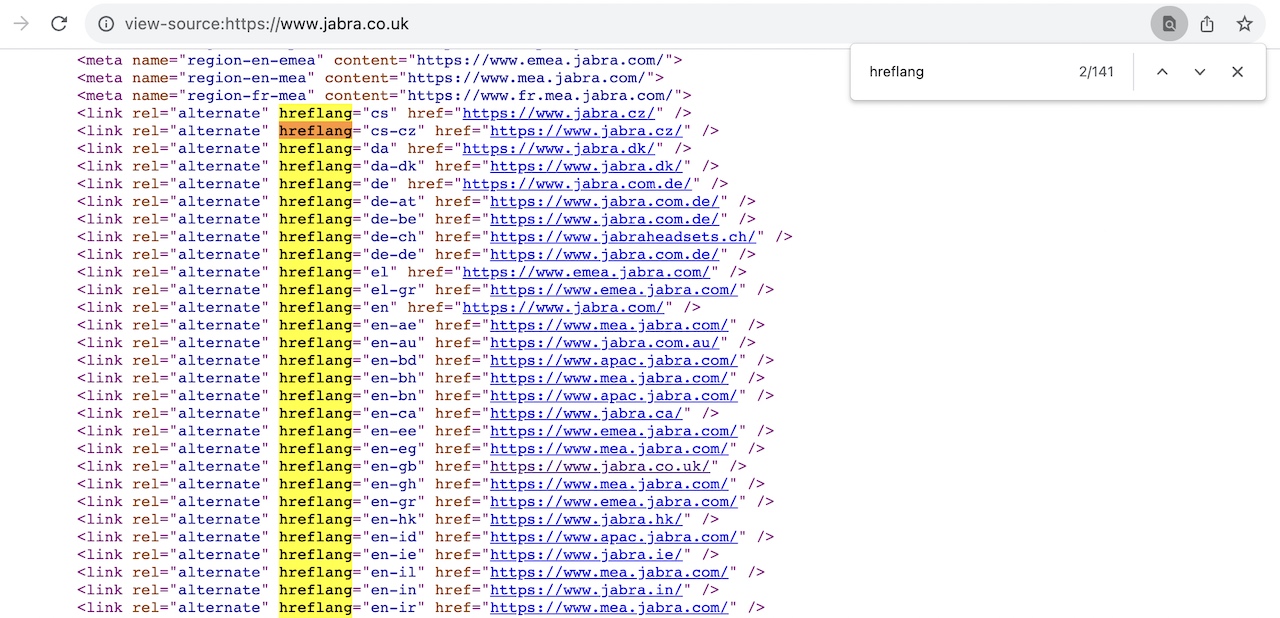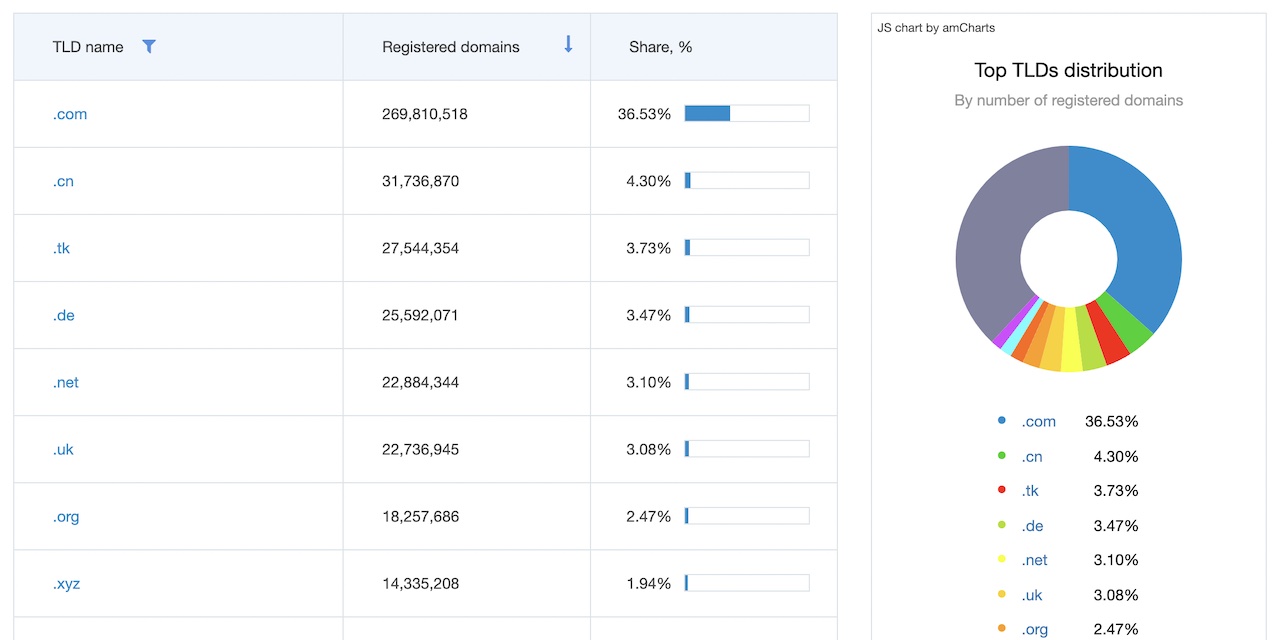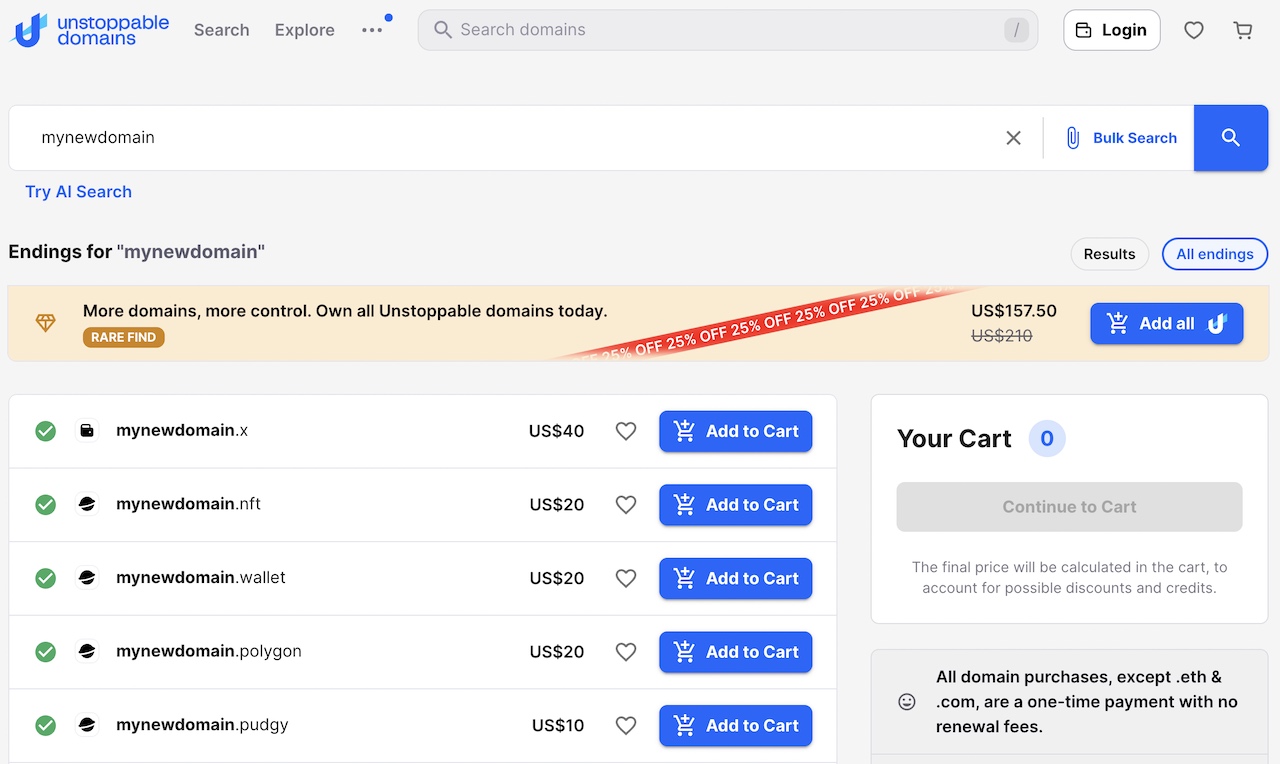Discover Top-Level Domain Basics: ccTLDs vs gTLDs and Other TLD Types
Did you know that there are over 1,500 top-level domains (TLDs) available for websites today? From the classic .com to niche-specific options like .photography or .guru, the world of TLDs is vast and diverse.
Choosing the right TLD for your website is crucial for establishing credibility and attracting your target audience. In this post, we'll explore the significance of top-level domains, how they impact your online presence, and tips for selecting the perfect TLD to elevate your brand. Get ready to navigate the world of TLDs and make an informed choice that sets your website up for success.
For example, Jabra uses a mix of domain types such as gTLDs (.com) with subdomains, along with ccTLDs (.cz, .dk, .de, .ch, .ca, etc):

Key Takeaways
TLD Basics
When it comes to top-level domains (TLDs), they are the highest level in the Domain Name System hierarchy. TLDs play a crucial role in website addresses, indicating the website's purpose or geographical location. For instance, com signifies a commercial entity.
Importance
Choosing the right TLD for your website is vital as it impacts your branding and credibility. The TLD you select can influence how users perceive your website's trustworthiness and relevance. It helps define the nature of your online presence.
Domain System
In understanding the Domain Name System (DNS), it serves as a directory that translates domain names into IP addresses. The hierarchy of domain names starts with top-level domains like .com, followed by second-level domains and subdomains. Registrars manage domain registrations, while registries oversee specific TLDs.
TLD Types
Generic TLDs
Generic top-level domains (gTLDs) are versatile web address endings that serve various purposes. They extend beyond common options like .com to cater to specific industries or interests. For example, .edu is tailored for educational institutions, while .gov signifies government entities.
Some gTLDs target niche markets, such as .photography for photographers or .tech for technology-related businesses. By using these specialized gTLDs, you can enhance your online branding and attract a more targeted audience, increasing visibility and credibility in your sector.
Country Code TLDs
Country code top-level domains (ccTLDs) are associated with specific countries, helping websites establish a local presence. They play a crucial role in targeting audiences within particular regions by signaling the website's connection to a specific country. Popular examples include .uk for the United Kingdom and .ca for Canada.
For businesses looking to expand globally, utilizing ccTLDs can aid in building trust with local customers and improving search engine rankings within specific regions.
New TLDs
New top-level domains (TLDs) offer fresh alternatives to traditional choices, providing opportunities for unique branding and differentiation. With an array of new extensions like .online, .store, or .blog, websites can stand out in crowded online spaces.
TLD Significance
SEO Impact
When selecting a top-level domain (TLD), you need to consider its potential SEO impact. Certain TLDs, such as .com or .org, are more familiar to users and search engines. To optimize SEO with TLDs, ensure your domain is relevant to your content and brand.
In terms of keywords used within domains, the effect is little to none compared to in the 90's and early 2000's when domains used to rank very high because they had relevant keywords within them. Instead, make sure the domain name is concise, relevant, and memorable.
For example, using Namelix.com you can generate a list of unique domain names using their AI system that aligns with your business or niche. In this case, we entered "Drone Photography" and within an instant, it generated all of these cool names, along with logo styles, that can be used as potential domain names. Then it's just a matter of looking if .com or other TLDs are available for the chosen name.

Brand Identity
Your choice of TLD significantly contributes to your brand identity. By selecting a unique or industry-specific TLD like .tech or .store, you can enhance brand recognition and stand out in a crowded online space. Successful brands have leveraged unique TLDs to create memorable online experiences for their customers.
Global Reach
Top-level domains play a crucial role in helping websites achieve a global reach. By using country-code TLDs like .uk or generic TLDs like .net, you can establish international credibility and connect with audiences worldwide. When selecting a TLD, it's essential to consider the global reach implications to ensure your website resonates with diverse audiences.
Historical Milestones
Early Developments
When it comes to top-level domains like .com, they have a rich history that dates back to the early days of the internet. In the late 1980s, the first TLDs were introduced, including .com, .net, and .org. These TLDs were initially managed by Jon Postel, a significant figure in the development of the internet.
The historical context of TLDs is crucial in understanding their evolution. Over time, as the internet expanded globally, more TLDs were introduced to cater to different countries (ccTLDs) and specialized purposes (gTLDs). This expansion led to a diverse domain landscape that continues to grow.
Key milestones mark the adoption of top-level domains. For example, in 1998, the Internet Corporation for Assigned Names and Numbers (ICANN) was established to oversee domain management globally. This shift marked a significant milestone in standardizing domain policies and regulations.
Key Changes
Significant changes have occurred in the management and regulation of top-level domains over the years. Policies set by ICANN and other regulatory bodies have played a crucial role in shaping the domain industry. For instance, the introduction of new gTLDs like .biz and .info provided more options for businesses and organizations to establish their online presence.
These changes have had a profound impact on the domain industry, influencing how businesses choose and manage their online identities. Understanding these shifts is essential for navigating the dynamic world of domain names effectively.
Evolution of TLDs
From Origins to Now
When tracing the evolution of top-level domains (TLDs), you are taken on a journey from their humble beginnings to the multitude of options available today. Over time, TLD management has undergone significant changes, adapting to the growing needs of the internet.
You witness the transformation of TLD management as it shifted from a limited number of generic TLDs like .com, .org, and .net to include country-code TLDs such as .us, .uk, and .jp. The process reflects the expansion and diversification of TLD options catering to different purposes and audiences.
The growth and diversification of TLD options have not only provided more choices for website owners but also enhanced branding opportunities. You can now choose from a wide array of TLDs that align with your industry, location, or personal brand.
According to data on domainnamestat.com, here is a breakdown of the current TLD distribution worldwide, with .com having a 36.53% share, followed by .cn, .tk, .de, and the others.

Notable Additions
Exploring notable additions in the top-level domain space reveals how new TLDs have revolutionized the domain naming system. With innovative and unique TLD choices such as .tech, .blog, and .space, you have the freedom to create distinctive online identities.
These new additions have not only expanded the domain landscape but also empowered businesses and individuals to craft memorable online presence. The impact of these innovative TLD choices resonates in creating niche communities and fostering digital innovation.
Oldest Domains
Second-Level List
When it comes to com domains, you have likely encountered popular second-level domains like google.com, amazon.com, and apple.com. These domains are widely recognized and easy to remember.
The structure of a second-level domain is simple: it precedes the top-level domain in a web address. For example, in example.com, "example" is the second-level domain under the TLD ".com".
Choosing a memorable second-level domain is crucial for creating a strong online presence. A catchy and relevant name can make your website more accessible and easier to share with others.
Selecting a second-level domain that reflects your brand or content can significantly impact your website's success. Make sure to consider both creativity and relevance when making this decision.
Special TLD Categories
Reserved Domains
When it comes to com TLD, reserved domains are specific names set aside by the registry for various reasons. Reserved domains like example.com or test.com are not available for public registration. These exclusions serve purposes such as preventing confusion and maintaining brand integrity.
The guidelines for reserved domain names typically include restrictions on length, content, and usage. Specific criteria must be met to qualify for a reserved domain within the com TLD. For instance, names closely resembling existing major brands are often reserved to avoid trademark infringement issues.
Certain domain names are reserved to prevent misuse or abuse by unauthorized entities. Reserving specific domain names ensures that critical web addresses remain secure and under the control of authorized organizations. This practice helps in safeguarding the reputation and credibility of established brands.
Rejected Proposals
In the history of search engines, several proposals for top-level domains have been rejected due to various reasons. Rejected proposals like .websearch or .findengine were turned down to maintain the integrity of the domain naming system. Such decisions aim to uphold consistency and clarity in online identities.
The rejection of certain TLD suggestions is often based on factors like potential conflicts with existing namespaces or ambiguity in purpose. Criteria for approving new TLDs involve thorough evaluation of technical feasibility, market relevance, and potential impact on the overall internet infrastructure. These considerations ensure that new top-level domains contribute positively to the online ecosystem.
Future of TLDs
Emerging Trends
As the internet landscape evolves, new trends in top-level domains (TLDs) are emerging. Technological advancements continue to influence how TLDs are used and perceived. With the rise of AI and blockchain, innovative TLD options are on the horizon.
For example, Unstoppable Domains offers blockchain domains that can be used for web 3.0 blockchain-based websites or applications:

You can expect increased personalization in domain names, catering to specific niches and audiences. AI algorithms may recommend tailored TLDs based on user preferences and search history. This customization enhances brand identity and online presence.
In the realm of cybersecurity, secure TLD extensions are gaining traction to combat cyber threats. Encrypted domains provide an added layer of protection against hacking attempts and phishing scams. Your website's security can be bolstered by opting for these secure TLD options.
Potential Innovations
Looking ahead, potential innovations in the TLD space offer exciting prospects. Future technologies, such as augmented reality (AR) and virtual reality (VR), could introduce immersive domain experiences. Imagine interactive TLDs that engage users in novel ways.
With the advent of IoT (Internet of Things), smart TLDs might become a reality, connecting physical devices to unique domain addresses. This integration opens up possibilities for seamless communication between gadgets and online platforms. Your smart home could have its dedicated TLD for effortless control.
Innovations like voice-activated domains could revolutionize how websites are accessed, making browsing more convenient and accessible. By simply speaking your desired domain name, you can navigate the web hands-free. Embracing these innovations ensures staying at the forefront of digital advancements.
Final Remarks
You've now journeyed through the world of top-level domains, understanding their basics, types, significance, historical milestones, evolution, oldest domains, special categories, and future. The internet's naming system is a fascinating realm that continues to evolve, shaping the digital landscape we navigate daily. As you grasp the significance of TLDs, remember that they are more than just web addresses; they represent identity, purpose, and innovation in the vast online universe.
Now equipped with knowledge about TLDs, explore further into this dynamic field. Consider how TLDs impact branding, SEO strategies, and online presence. Stay curious and updated on the latest trends in domain names. Who knows? You might just stumble upon the perfect TLD that propels your online endeavors to new heights.
Frequently Asked Questions
What are the different types of top-level domains (TLDs)?
There are various types of TLDs, including generic TLDs like .com, country-code TLDs like .uk, and sponsored TLDs like .gov. Each serves a specific purpose or group of users.
Why are top-level domains (TLDs) significant?
TLDs help categorize websites based on their purpose or location. They also play a role in branding and establishing credibility online.
How have top-level domains (TLDs) evolved over time?
TLDs have expanded from just a few options to include a wide range of choices catering to different industries, interests, and regions.
What are some examples of the oldest domains with top-level domains (TLDs)?
Domains like symbolics.com (registered in 1985) and bbn.com (registered in 1986) are among the earliest domain registrations.
What can we expect for the future of top-level domains (TLDs)?
The future of TLDs may involve more specialized domain extensions catering to niche markets, increased security measures, and possibly even more personalized TLD options.